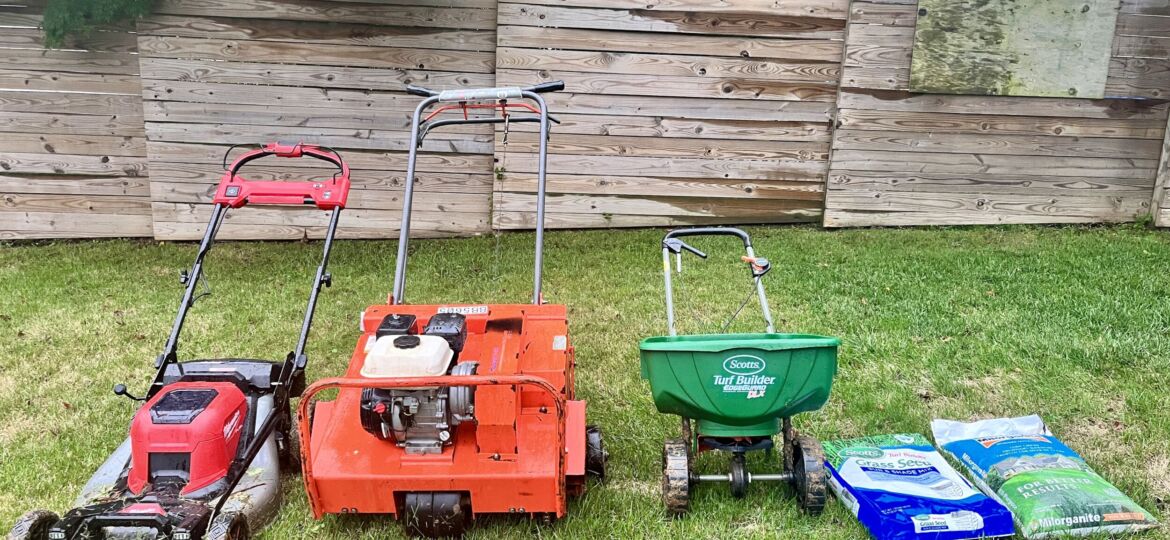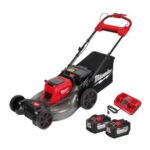
Fall is the best time to aerate your lawn in most parts of the country.
Generally speaking, grass is a cool-weather plant and it likes the cool nights, warm, sunny days, and dew-soaked mornings that the transition from summer to fall delivers.
Why do we aerate the lawn?
Aerating your lawn serves several purposes that your lawn will love. In hard clay soils that can get bumpy from freeze/thaw cycles, aerating can smooth out those bumps, making life easier on you and your lawn mower.
More importantly, however, the plugs of earth an aerator pulls up enables oxygen, nutrients and water to get to the roots of the grass plant. Aerating also softens the soil and perforates built-up thatch that may well be choking optimum grass growth.
The zillions of holes–and this is one of my favorite parts of aerating the lawn–also provide hidey-holes for grass seed to nestle into instead of running off the lawn. The plugs laying on top of the turf do the same thing.
Together, they hold seed where you want it and for that reason, I like to aerate, seed, and fertilize in order on the same day.
What tools and supplies do we use?
When we aerate, we start with mowing the lawn and end with watering it. If you plan to tackle all of these steps, you’ll need a few supplies.
















How do we aerate the lawn?
The first step is mowing the lawn.
Then I rent an aerator. For me, it’s the new Sunbelt Rentals here that had the machine I needed. A 27-inch Husqvarna, it’s a beast and I needed my trailer to transport it. They also rent a smaller, more manageable 19-inch tool.
After aerating, I really like the slow-release nitrogen fertilizer Milorganite. It’s good-proof, not made from petroleum, made in the US and is easy to use.
Next, I apply seed. This year I used a Scotts sun and shade blend seed which I spread using a new spreader (my old one died) with a feature called “edge guard.” Also a Scotts, I liked using the Scotts broadcast spreader with with EdgeGuard to spread seed along a sidewalk without spreading it on the sidewalk.
Finally, all will almost surely be for naught without water. New grass seed loves copious amounts of water–and while rain helps, don’t count on it.
We’ve found that 20 minutes of watering from a sprinkler in the morning and 20 minutes at night seems to work nicely here. Repeat watering until the grass pops and is above ground. It’s usually a week or so of moving the sprinkler around, but it works and is worth it for those who want a lush lawn.
And now, the grass will be up, growing strong reaching for the sun. Next year, it’ll also come up strong and I’ll be ready to beat the weeds early.

